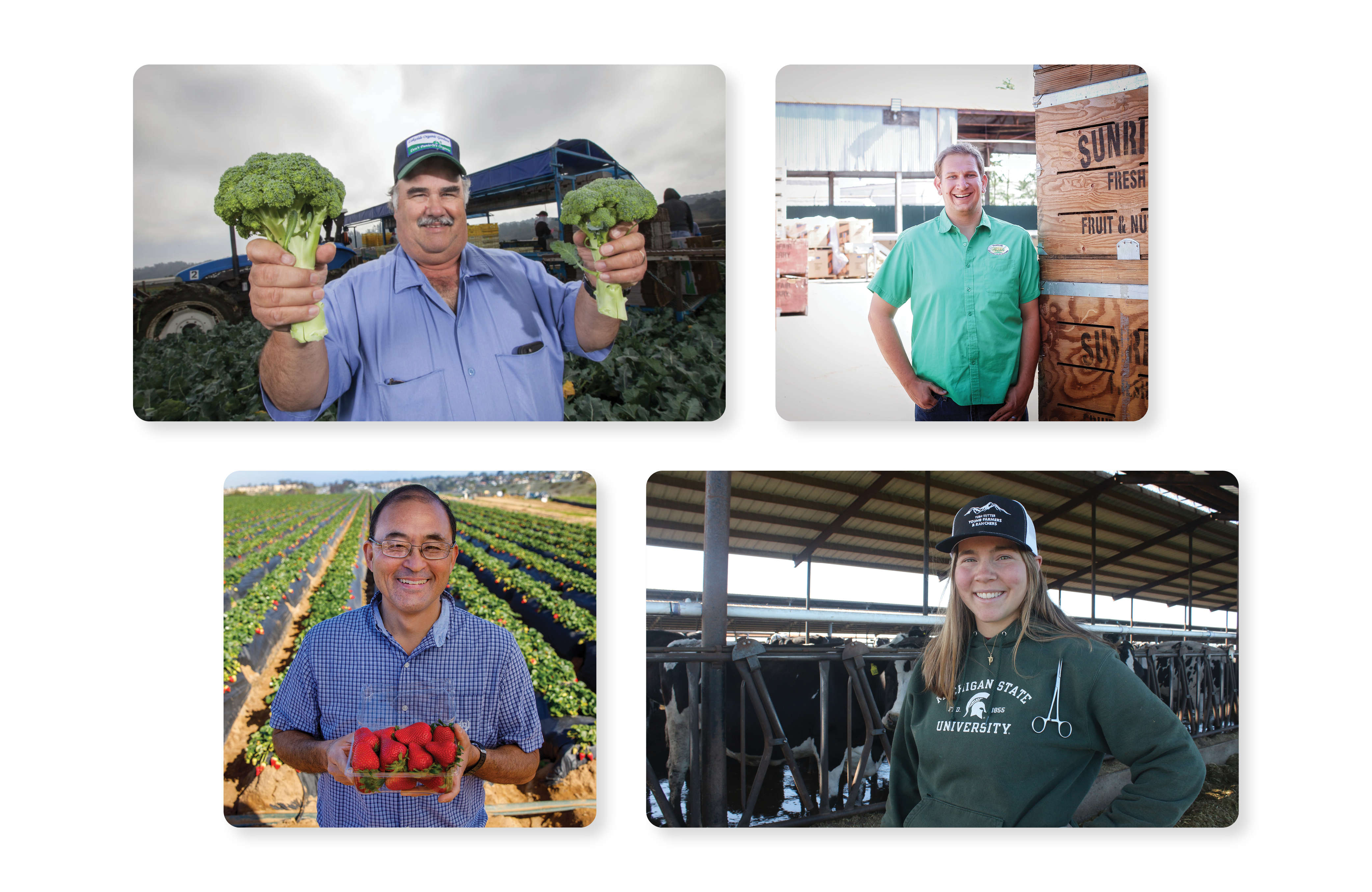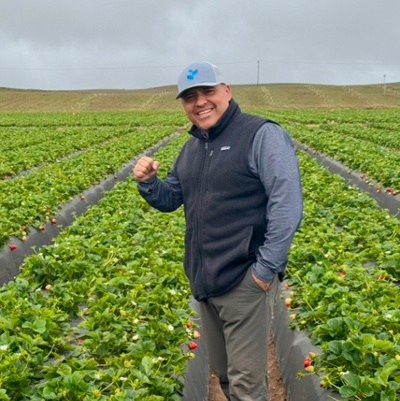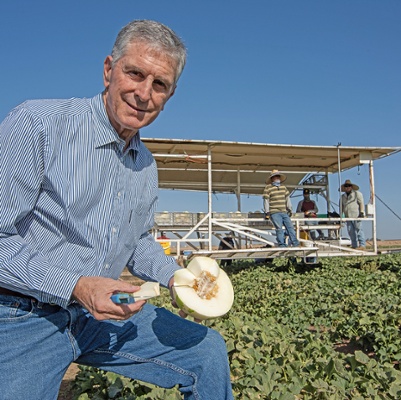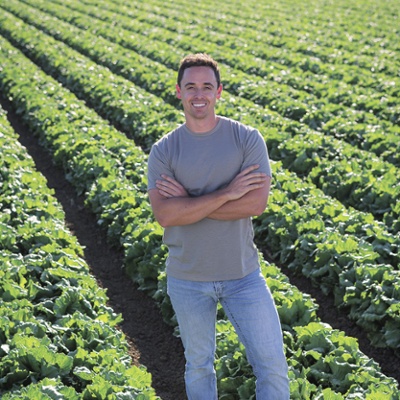From the Fields
From the Fields offers firsthand perspectives from farmers and ranchers on their experiences across the Golden State’s agricultural landscape. To contribute, email agalert@cfbf.com.
Sponsored by: 

-

- April 23, 2025
- From the Fields: Ryan Elliot, Sacramento County pear grower, packer and shipper
-
By Ryan Elliot, Sacramento County pear grower, packer and shipper
We’re past bloom. We’ve been able to see what fruit is going to stick on the trees, and there seem to be plenty sticking. It looks very promising. We’re continuing our fire blight applications and checking sprinklers, getting ready for irrigation season.
We’re interested in seeing what is going to happen with tariffs. We send about 10% of our fresh-packed fruit to Canada and about 5% to Mexico. Our sales team is planning to go to Canada next month to meet with some of our buyers. We’re also in talks with our Mexican buyers. With Canada, there’s some concern around the boycotts of American products. If Canadian consumers aren’t buying, then our customers there aren’t going to replenish their orders, and then the fruit isn’t moving. It might not seem huge, but it’s been a favorable market for us for years. Hopefully, the tariffs stop some of the canned fruit from China and Europe, and we can focus more on our domestic canned fruit products.
In terms of technology, we’re focusing more on the packinghouse. Our pears are sorted by hand into three grades: fresh pack, cannery and juice. We have about 180 people in the packinghouse when it’s running at full tilt. We toured several packing facilities in the Pacific Northwest that have optical sorting systems. The pears come down a grading machine, and a series of cameras takes about 20 pictures of an individual pear, a machine rotates the fruit 180 degrees, and pictures are taken of the other side. A computer program keys in on any blemishes. The pears then drop onto a belt and are taken to different parts of the packinghouse.
Hopefully in the next three years we’ll invest in an optical sorting system. It would allow us to take about 60 hand sorters off the packing lines. We’re blessed to have highly skilled workers, but that quality labor may not always be there, so we want to get in front of it and make sure we can run our packinghouse with fewer people.
-

- April 23, 2025
- From the Fields: José Ramírez, Monterey County certified crop adviser
-
By José Ramírez, Monterey County certified crop adviser
My day to day consists of visiting with Central Coast berry and vegetable growers and listening to their concerns about challenges they face to grow a good crop while being good stewards of the environment.
As a certified crop adviser, I focus on the best return on investment to the grower. I believe it takes a commonsense approach to evaluate, diagnose and recommend what is needed, bridging the gap between soil and plants. Many times, my recommendations include going back to the basics. For example, picking your best ground for the most challenging crop or reduce water use.
The latest trend is the use of biostimulants as California has announced them as beneficial substances. One of the many tasks is to screen them for efficacy for more than one season in different crops, soils and microclimates. The majority of biostimulants are plant extracts, but some have macronutrients and/or secondary nutrients like calcium and magnesium.
One of the biggest pest problems is the two-spotted spider mite, and the other is lygus. In the disease world, you have a lot of problems with pathogens—fusarium, macrophomina and phytophora.
To battle these, when you plant a berry or lettuce field, transplants are dipped in a solution of amino acids, microorganisms or pest-specific synthetic products. The follow-up is to continue to fertigate with these types of inputs and/or products categorized as biocontrol agents. This practice helps create a healthy soil environment for the root to grow.
There are biofungicides or microorganisms that are registered with EPA for this specific purpose. The idea is to have biodiversity and use of an integrated approach. Biodiversity is key, so integrating many types of products goes a long way.
Farmers have been sustainable for years. If not, they wouldn’t be here. We as crop advisers are helping them be more sustainable by the transfer of technology. As CCAs, we are always going to seminars and evaluating products and taking a hands-on approach.
-

- April 23, 2025
- From the Fields: Joe Colace, Imperial County melon and vegetable grower, packer and shipper
-
By Joe Colace, Imperial County melon and vegetable grower, packer and shipper
We are into our second full week of sweet corn harvest. We had a little bit of a cool spell in early April, and that cool spell may have set maturing back a couple of days. Overall, we’re very pleased with the crop. We have the bicolor and the white corn that are going, and we were up to full production last week.
On the melon front, we are excited for what we see in the fields, anticipating what we believe will be a normal start time, which is the first week of May. The quality looks encouraging, so we’re optimistic we’ll finish well. The weather forecast is slightly above-average temperatures, so that bodes well for the melons. The other thing we like is dry weather, and we have that nice westerly flow, which gives us the drier conditions, so everything is very positive.
We’re very excited about the prospects of our Picasso line of specialty melons. We have our frontline Picasso melon, for which we have expanded the acreage base. There are a couple of other Picasso melons—the Picasso Sunrise and the Picasso Moon—and we expanded trials for both varieties. The Picasso is a hybrid melon that comes from two different lines.
Related to technology, we are trying different types of mechanical weeding. There are a couple different companies that are working on that. They mostly focus on vegetables, but one of those companies is out in one of our melon fields. We’re encouraged with what we think is going to be the future. Obviously, AI application is becoming a reality, and we hope to be at the forefront. Also, we are trialing new varieties for the future, so we are relying on advanced technology when it comes to solubles, production and sizing. The plant breeders are working diligently to try to create what the consumer likes, which is a larger melon with good shelf life and the flavor profile that we work hard to maintain.
-

- March 26, 2025
- From the Fields: Jonathan Merrill, Monterey County vegetable grower
-
By Jonathan Merrill, Monterey County vegetable grower
As a company, we specialize in partner contracts and grow for bigger brands that you’ll see in the grocery stores. The vast majority of what we do is driven by our customers, the shippers. They tell us certain amounts or acres per week.
In January and February, we planted some of our winter crops like brassicas and leafy greens. March, April, May is when we start to ramp up once the rain winds down. We might have a few more systems roll through, but we’re ramping up quickly. In 90% of the Salinas Valley, irrigation is all well-driven, so the aquifer gets replenished by the rains and the reservoirs that are nearby. Our water table is healthy, but we could always use more (water). We still have some carryover from the last few seasons, especially when we got heavier rains in 2023.
Finding the right people at the right time and getting them in place and trained is always a challenge. But in terms of availability, labor has been OK. I coordinate the hoeing and the thinning crews. The development of technology, predominantly in thinning, has eliminated our reliance on labor. The crews that were doing thinning and hoeing, which was split 50-50, are now only doing hoeing, so their workload has shifted dramatically.
We’ve started to implement technology and automation, which helped make a volatile situation extremely predictable. Every field is now going to cost X, whereas in the past there was a range. A field could potentially be on the lower end or the higher end or an extremely high end in terms of cost. With automation, we know what the cost is going to be and can apply that across the full portfolio of crops that we do. This has helped alleviate our reliance on labor, but we’re always going to need labor to some degree, at least for the foreseeable future. We need to innovate and find new paths forward in the coming years.


